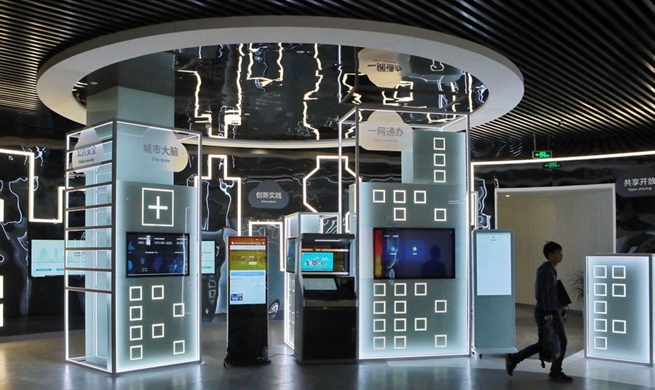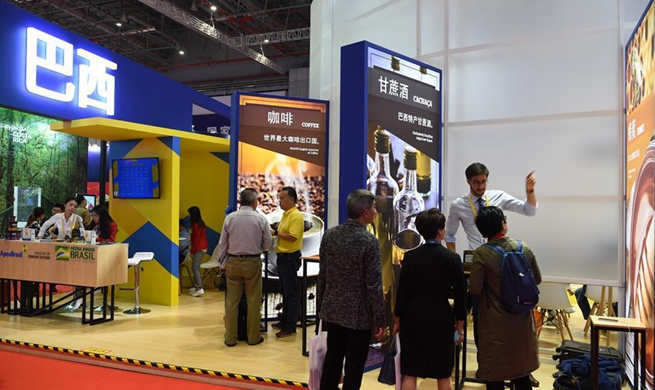BEIJING, Nov. 8 (Xinhua) -- China's foreign trade registered stable growth in the first 10 months of this year with more opening-up measures to follow in the near future.
The country's foreign trade volume expanded 2.4 percent year on year to 25.63 trillion yuan (about 3.67 trillion U.S. dollars) in the Jan.-Oct. period, with exports up 4.9 percent and imports down 0.4 percent, the General Administration of Customs (GAC) said Friday.
The country's trade mix continued to improve with general trade growth in both volume and proportion. General trade rose 4.8 percent year on year to 15.19 trillion yuan during the period, GAC data showed.
The reading accounted for 59.3 percent of China's total trade, up 1.4 percentage points over one year ago.
The European Union remained China's largest trading partner during the period, with bilateral trade volume up 8.3 percent from the previous year to 3.98 trillion yuan, followed by the ASEAN, up 11.9 percent to 3.54 trillion yuan, and the United States, down 10.6 percent to 3.07 trillion yuan.
China has made substantial progress in sharing high-quality development with countries along the Belt and Road, said Li Kuiwen, director of the GAC's statistics and analysis department.
Trade with Belt and Road countries rose 9.4 percent to 7.47 trillion yuan from January to October, faster than the overall average and accounting for 29.1 percent of the total trade.
The private sector, already the primary body of China's foreign trade, continued to play an even bigger part by making 10.87 trillion yuan in foreign trade in the first 10 months, up 10.3 percent year on year.
Friday's data also showed that China's crude oil imports climbed 10.5 percent to 415 million tonnes during the period, while imports of coal and natural gas increased by 9.6 percent and 7.9 percent respectively to 276 million tonnes and 77.71 million tonnes.
The soybean imports, however, fell 8.1 percent from last year to 70.69 million tonnes.
The government has repeatedly pledged efforts to keep foreign trade stable. The State Council confirmed 12 measures in an executive meeting on Oct. 23 to optimize forex management and promote cross-border trade and investment facilitation, including expanding the pilot project to facilitate forex receipts and payments.
















